Munch, Crunch, Lunch: Hungry Caterpillars in the Ripley Garden
For years I have been enamored with the Dutchman’s Pipe family – especially the large showy tropical varieties with their flamboyant flowers. Despite the cool features of these plants they are not palatable to our local Pipevine Swallowtails. Although the plant is in the right family for them to lay their eggs on, the larvae do not feed on it.
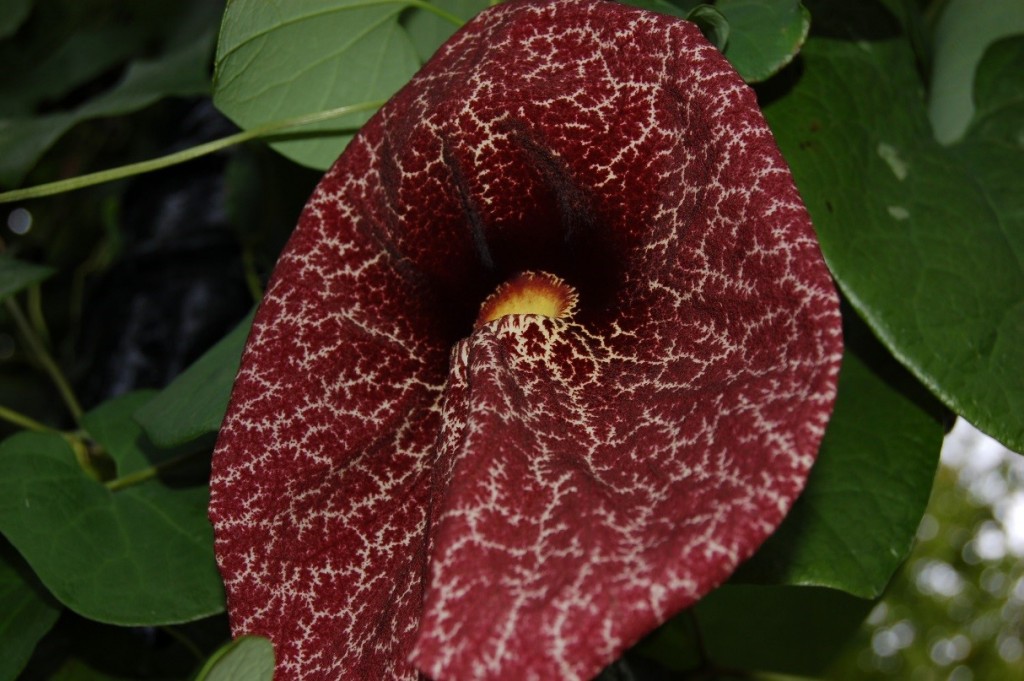
While I would love to have our native Pipevine in the Ripley Garden, I do not have the space for the east coast native Aristolochia macrophylla which can quickly take up 20-35 feet with each leaf being 12 inches across. It is a big time real estate consumer! Instead, I found that Aristolochia fimbriata is a perfect surrogate host for the wee caterpillars. This plant hails from regions of Brazil and northern Argentina and forms a low mass 6 inches tall by 2 feet wide of heart-shaped foliage with white venation. The flowers of this beauty look like wonderfully small golden pipes with lovely fringed ‘eyebrows’ and are pollinated by fungus gnats. In the D.C. metro area, the plant is deciduous (meaning it sheds its leaves annually), but root hardy and happy in either full sun or dappled shade and is easy to grow from seed or stem cuttings.
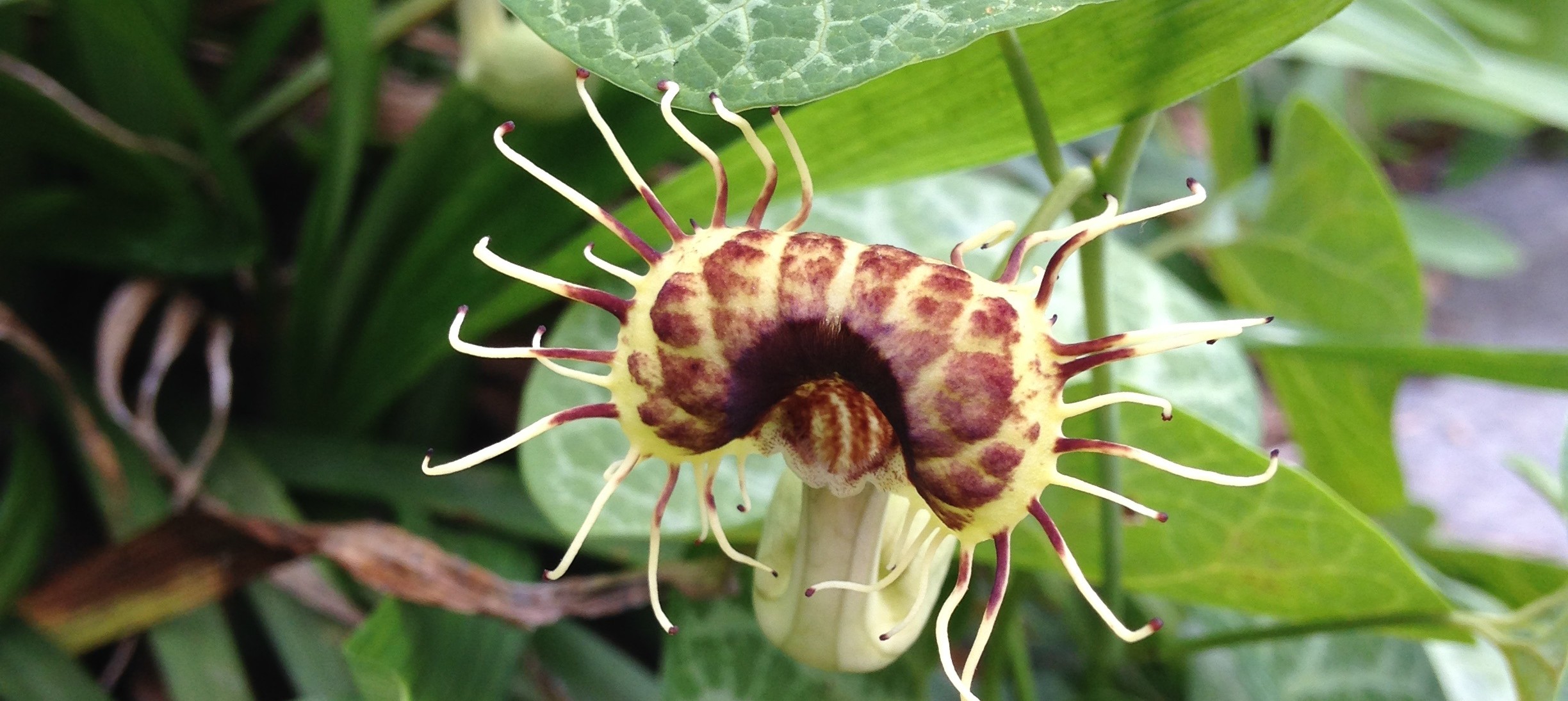
I tried a couple of times to establish this plant in the Ripley Garden only to have it eaten to the ground by a single caterpillar. This year, seeds were started at the Smithsonian Gardens Greenhouse Facility and the small plants were installed during the spring so that they had time to put on some growth before the butterflies arrived and started laying their eggs.
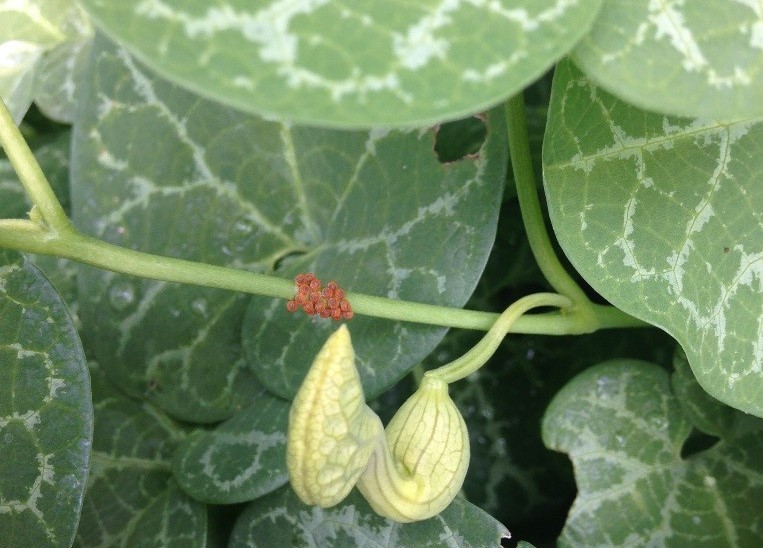
Once the plants were established, the female Pipevine swallowtails found them and started laying little masses of bright orange eggs. These then hatched out into caterpillars who started munching away on the foliage. The little ones stuck together at first, and then spread out among the foliage. As the caterpillars go through various instars (phases between periods of molting), their appearance changes until they are about 4 inches long, with velvety dark purple-black coloring and bright orange markings down their back side. They will then stop eating and find a place to create a chrysalis, or protective covering, which looks like dried leaves. At this point they will either metamorphosize into an adult butterfly, or stay in the chrysalis to overwinter. The whole process from egg to butterfly takes about 35 days.
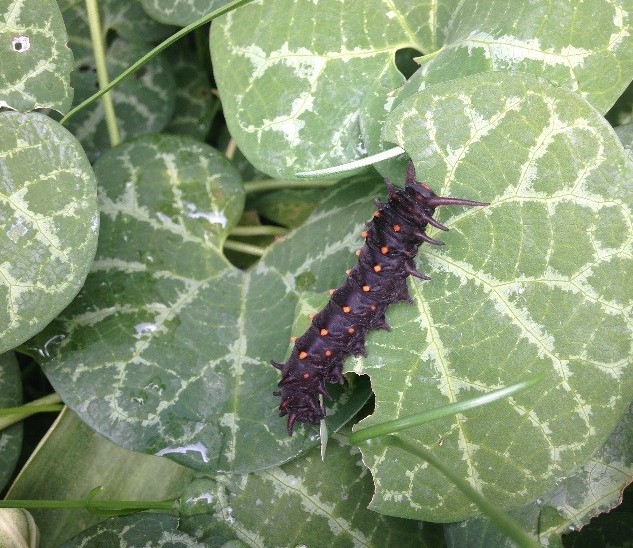
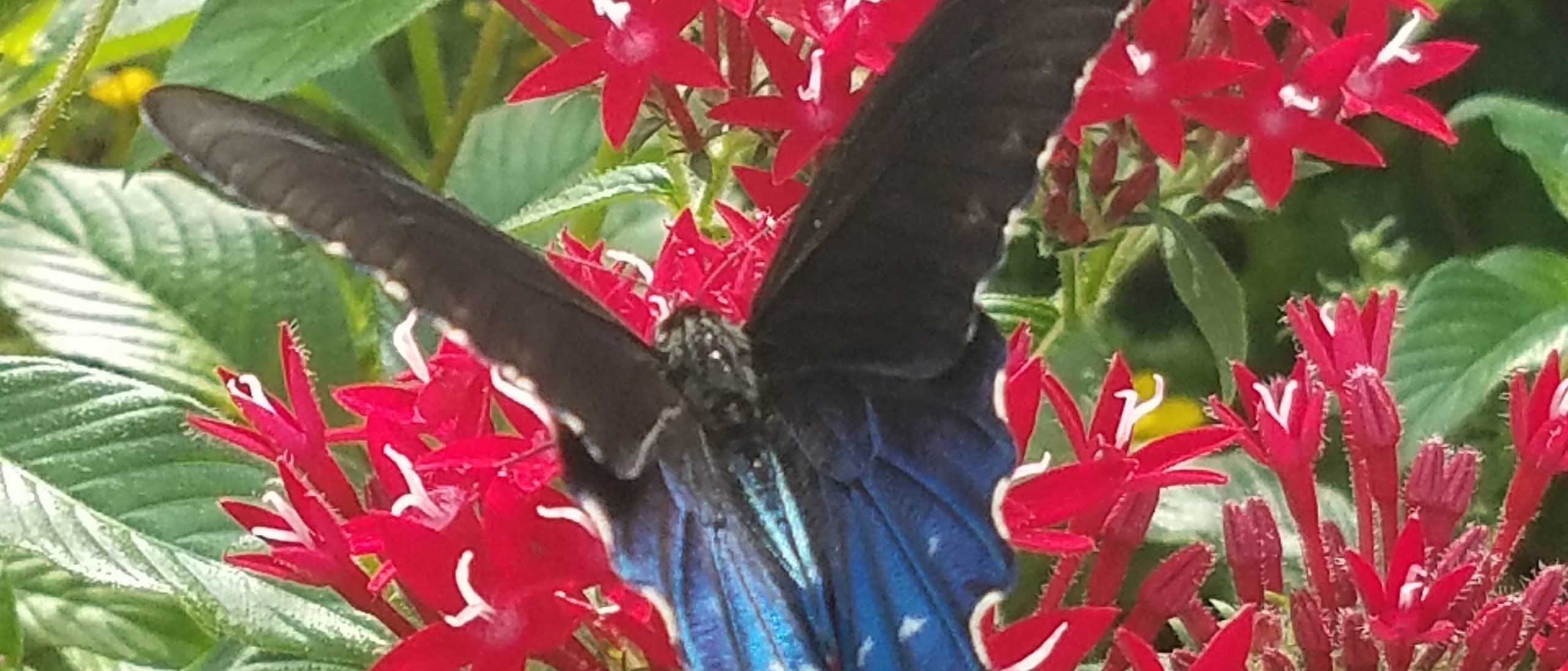
I am delighted to see a profusion of Pipevine swallowtail butterflies flitting about the garden knowing that these beautiful creatures have found a safe home in the Mary Livingston Ripley Garden! You too can enhance your garden with this airborne wildlife, just by planting the food they need to survive.

